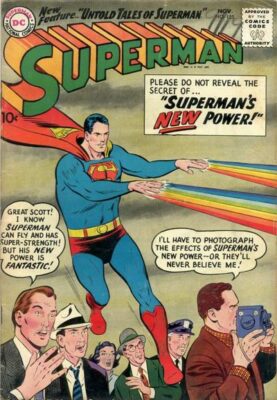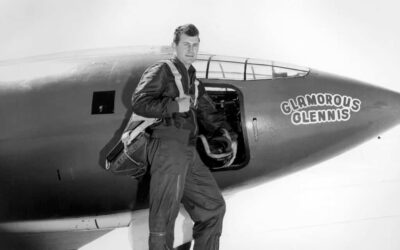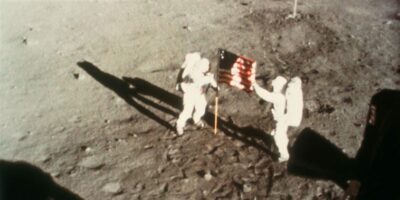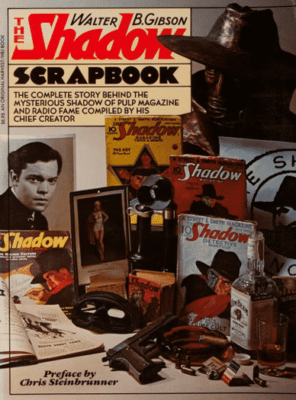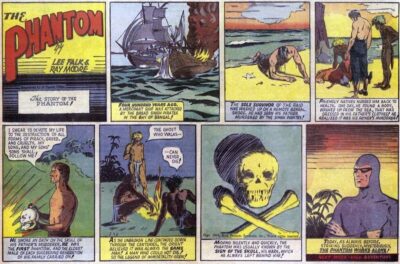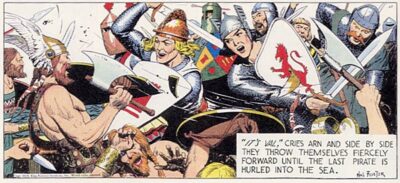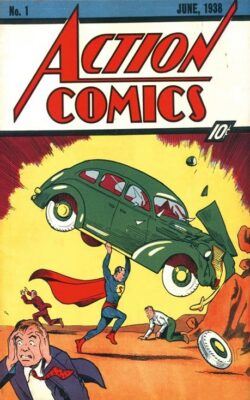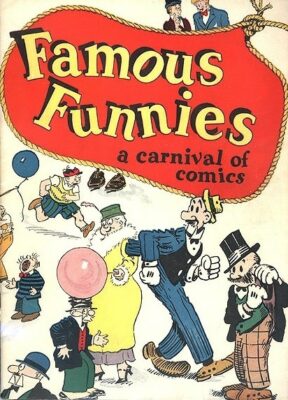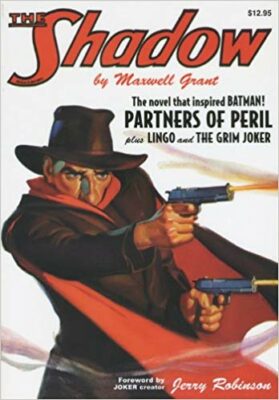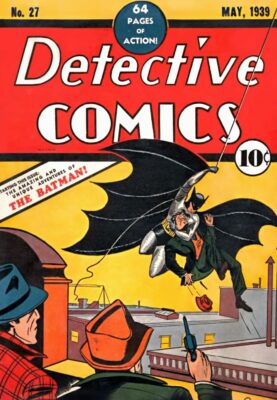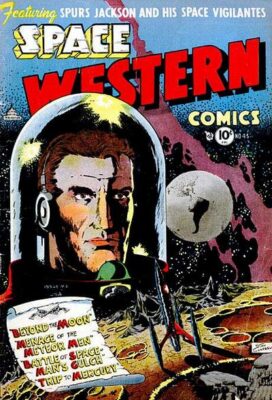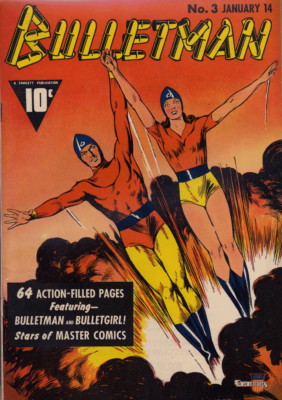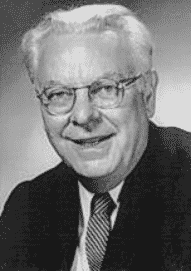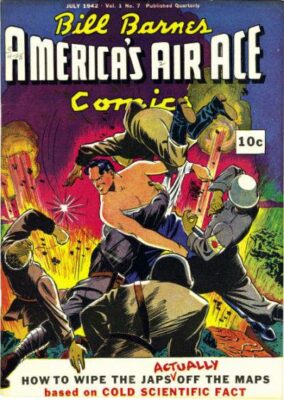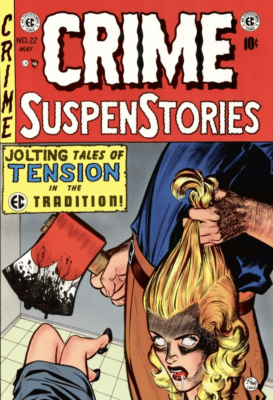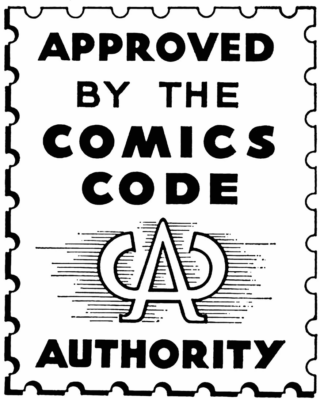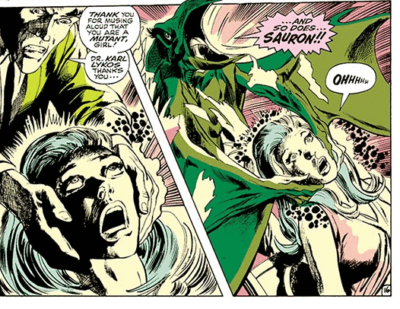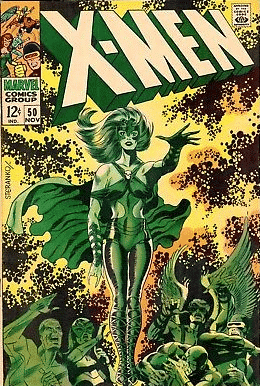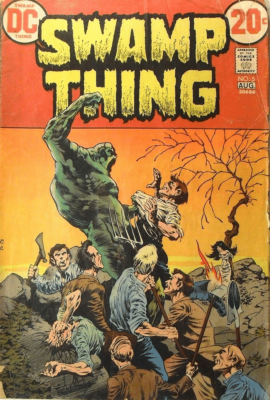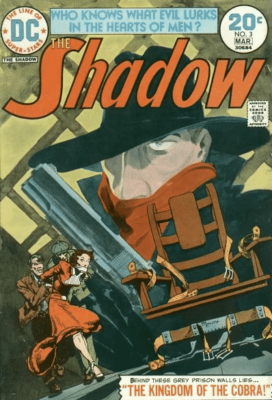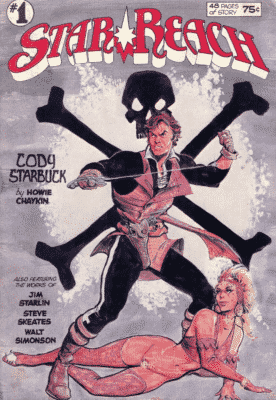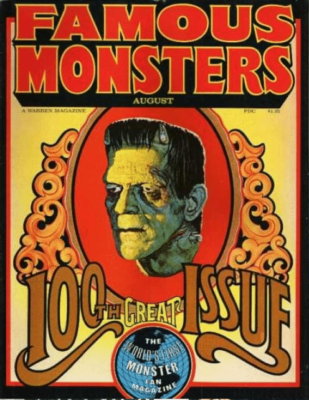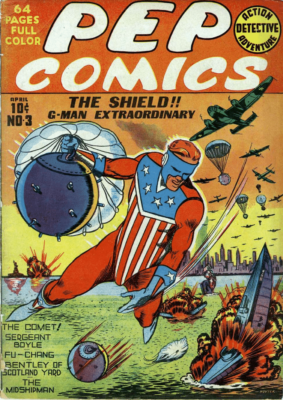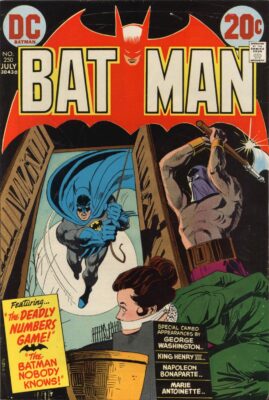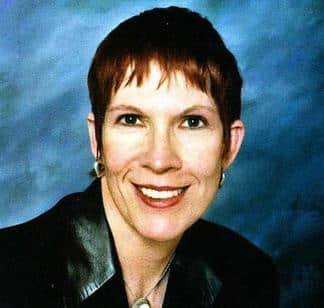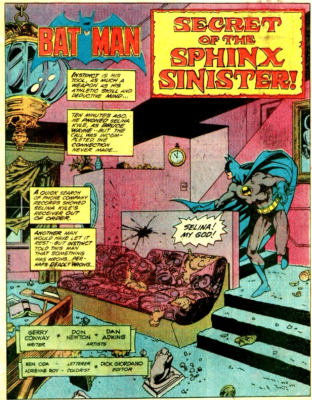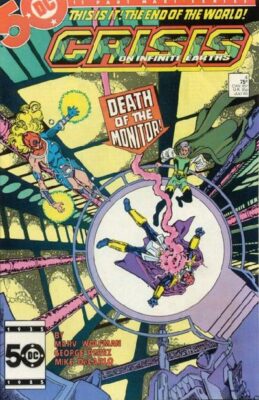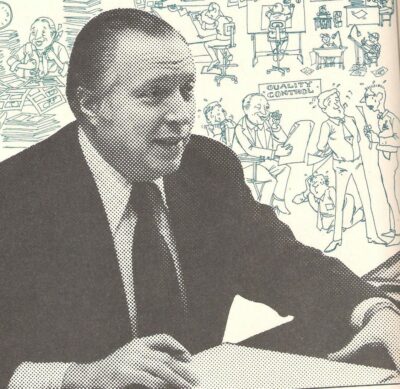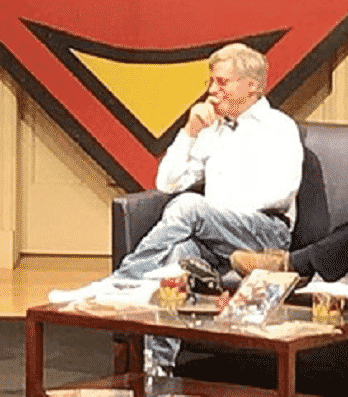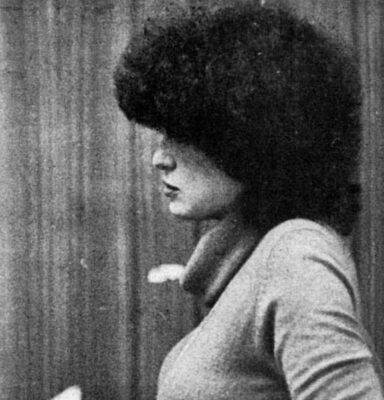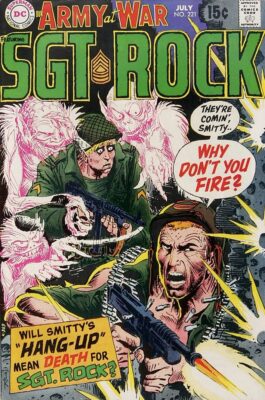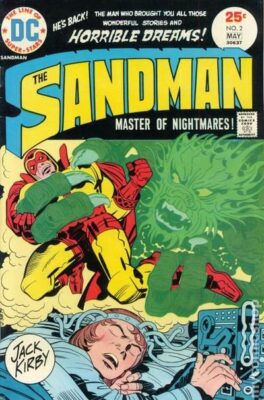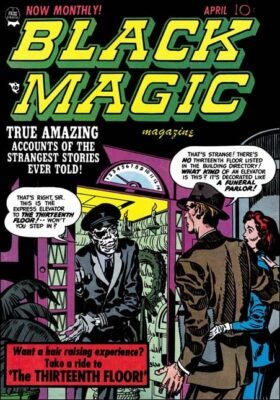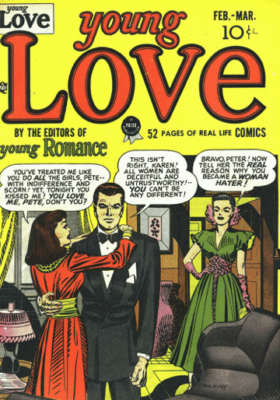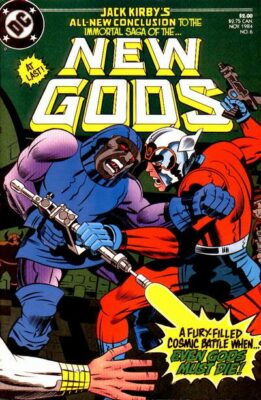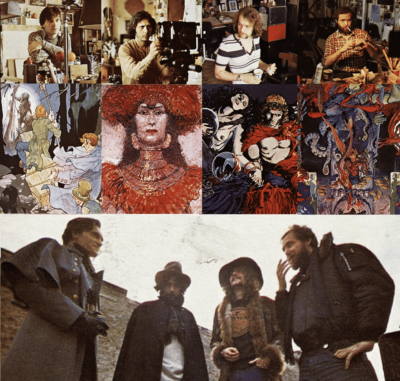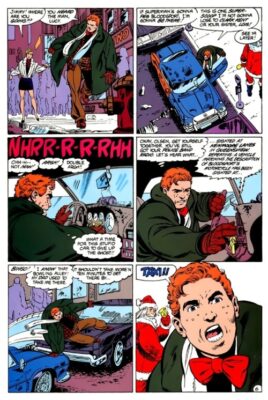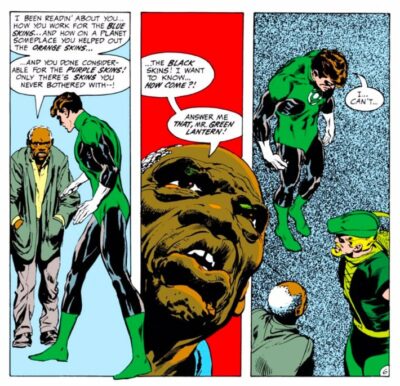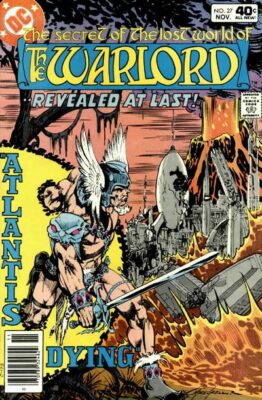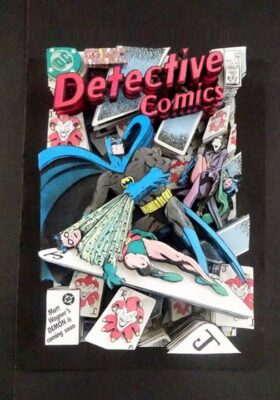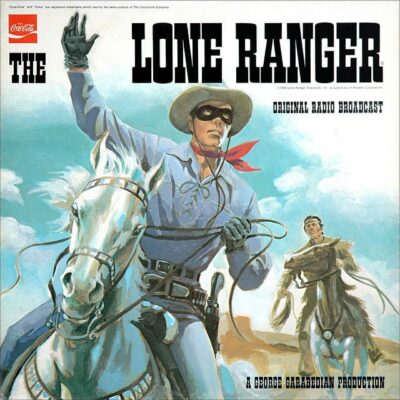Anthony Tollin Interview, DC Comics Colorist & Pulp Historian by Alex Grand
Read Alex Grand’s Understanding Superhero Comic Books published by McFarland Books in 2023 with Foreword by Jim Steranko with editorial reviews by comic book professionals, Jim Shooter, Tom Palmer, Tom DeFalco, Danny Fingeroth, Alex Segura, Carl Potts, Guy Dorian Sr. and more.
In the meantime enjoy the show:
Anthony Tollin is a professional comic book colorist. Tollin started working for DC Comics in the early 70s as an assistant to Tatjana Wood in the coloring department. In the early 80s, he became the main colorist for DC, doing almost all of the covers of the publications of the company at the time. Alex Grand interviews Anthony Tollin about starting work at DC Comics in the early 1970s. Discussing his influences and co-workers like Sol Harrison, Irv Novick, Jack Adler, Jim Aparo, Bob Oksner, Walter Gibson, Lee Falk, Jack Kirby, Joe Simon, George Perez and John Byrne. He also discusses his involvement in Pulp history with the Shadow and Radio involvement with the Lone Ranger.
#AnthonyTollin ##SDCC2019colorist #DCComics #comics #comicbooks #comicscode #ComicBookHistorians #AnthonyTollinInterview #ComicArtistInterviews #ComicBookHistorians
🎬 Edited & Produced by Alex Grand, ©2021 Comic Book Historians, Sound FX – Standard License. Images used in artwork ©Their Respective Copyright holders. Images used for academic purposes only.
Anthony Tollin Interview by Alex Grand at San Diego Comic-Con 2019
📜 Video chapters
00:00 Intro
00:19 Childhood comic influences
00:25 John Glenn
01:27 The Shadow & The Phantom
01:58 When/why got into comic books?
02:38 Sol Harrison
03:35 Batman influence Walter Gibson
05:40 Comics Code
06:00 Warren Famous Monsters
06:20 Irv Novick
06:46 Adrienne Roy
07:56 Comic book coloring
08:58 Adler & Schwartz
11:10 Kubert & Simon
12:15 New Gods
12:20 Colored half DC’s Covers
12:39 Great Comics when I started 1973
13:15 Barry Smith Art Studio
13:24 All us comic creators hung out
15:05 John Byrne
16:20 New Teen Titans
17:08 1970s more freedom
17:35 Wrap Up
Transcript (editing in progress):
Alex Grand: Well, I’m Alex Grand… I’m speaking to comic book and pulp historian, veteran Anthony Tollin. Anthony Tollin, how are you doing?
Anthony Tollin: I’m doing just fine.
Alex Grand: Anthony tell us about what kind of comics you were reading as a child and what got you into comic books?
Anthony Tollin: Well, the first comic book I bought was Superman with the rainbow powers and I think 1958
, and my favorite comic book in my childhood was Green Lantern, because I was the child of the space age. John Glenn went into orbit on my 10th birthday, and Hal Jordan of course was a Chuck Yeager-esque test pilot.
Anthony Tollin: By the way today, 50 years ago today, I watched Neil Armstrong set foot on the moon, with Gordon Dickson, who was that year president of the Science Fiction Writers of America.
So the day that science fiction became science fact, I was sharing the event with the president of the SFWA, and one of the great science fiction writers himself. But my favorite characters have always been the Hal Jordan Green Lantern although I cosplayed as Alan Scott at the 1973 Seuling-Con.
Alex Grand: Powered by the green flame.
Anthony Tollin: Right. And The Shadow
I fell in love with in junior high and I started collecting the pulps, I have a complete set of The Shadow pulps, and I co-authored The Shadow Scrapbook with Walter Gibson.
And the other one of my top favorite characters is The Phantom, and I was a friend of Lee Falk’s. And The Phantom of course predated Superman by two years and predated Batman’s debut by three years, debuted in February of 1936, but I was really lucky I got into comic books as part of the group that Howard Chaykin refers to as being there at the end of the beginning.
Anthony Tollin: And we were there at the end of the beginning because people hired us and the people trained us and the people we worked with were there at the beginning of comics. My two immediate bosses, Jack Adler, Jack did the color separations and coloring on Prince Valiant in 1937-38 on the Sunday pages for Hal Foster.
And, he developed the color separation method by which most comics were separated up to the digital computer age. And Jack also, like Sol Harrison, worked on Action Comics #1 on the separations.
And Sol actually worked on the separations and operated the binding machine on Famous Funnies #1, the first comic book in 1934.
So it’s really those of us who were members of the DC Woodchucks, who were working for DC in ’74,’75 through the seventies who have a lot of the memories we are preserving of the stories that the people who were there at the very beginning told us.
Alex Grand: And this is the genesis of comic books, and you mentioned Lee Falk. You’ve also mentioned before Walter Gibson and these both created characters that would influence Batman and the characters we know now.
Anthony Tollin: The very first Batman comic book story, The Case of the Chemical Syndicate was lifted start to finish from a 1936 Shadow novel Partners of Peril, which curiously was the first Shadow novel not written by Walter Gibson, but perhaps because of a simpler plot with less intricacies it was easier to adapt to a six page comic book story. But Bill Finger said that his first Batman story was a take-off on a Shadow novel. It was far more than a take-off.
There is nothing in that first Batman story other than the name and the costume that was not lifted from the Shadow novel. And in fact, The Shadow in the course of that novel is referred to several times as bat-like or a living bat, but yet Walter was one of the giants in comics. Walter Gibson also worked for 25 different comic book companies, Ace, Avon. He created Space Western for Charlton.
He wrote Captain Marvel family, and
Bulletman stories for Fawcett.
So I mean Walter, I keep recommending Walter for the Bill Finger Award because while he was a famous writer, his comic book work was generally unknown. He wrote most of The Shadow comic book stories in The Golden Age. He wrote a Bill Barnes story in which American pilot Bill Barnes is sent to end the war with Japan by dropping a U-235 bomb on Japan and the story came out in the spring of 1942 less than six months after Pearl Harbor and three years before Hiroshima and the U.S. government was not happy.
G-Men arrived at the Street and Smith offices because they just started The Manhattan Project, and suddenly here’s a story that says on the cover, in this issue we demonstrate with cold scientific facts how to blow Japan into the ocean, and there was quite a bit of explanation as to how a U-235 bomb would work and how powerful it would be and as I said, it came out four years before the atomic bomb.
Anthony Tollin: But I was of the generation of young fans and it’s funny to realize that the old guys, and it was so clear because there had been virtually no one new in the business since the forties except for a few during the EC.
Early fifties with EC, but because of the retrenchment that happened during the post Comics Code era,
no one new would come into the business until you had a couple like Roy Thomas and Neal Adams
and Jim Steranko in the mid sixties,
but then a few years later you had Len Wein and Marv Wolfman and Bernie Wrightson
and Mike Kaluta,
Howard Chaykin,
our generation, and Tony Isabella.
Anthony Tollin: I started at Warren and Marvel in ’73. I worked on Famous Monsters #100, and went to DC and began 21 years at DC Comics in ’74,
and we were there to work with the people. I mean, Bob Oksner and Irv Novick had both started in comics in 1939. Irv Novick was the original artist on The Shield at MLJ,
and he was drawing Batman when Adrienne and I were coloring it in the late seventies.
Alex Grand: The Adrienne you’re referring to your wife?
Anthony Tollin: My late wife, Adrienne Roy,
who colored 202 issues of detective comics, 191 issues of Batman, the Wolfman, Pérez Teen Titan from the beginning, Mike Grell’s Warlord starting with number 11.
She colored Crisis on Infinite Earths with me.
Actually because of deadlines would reach the point where almost everything we did was done as a team. I tended to do The Shadow Strikes and The Phantom by myself, she did Manhunter and some of the Batman stories, and Slash Maraud she did on her own, but generally I would do the covers and then we would work together. It was just because so many of the hot books we were on had the most overworked teams, so they were coming in and had to be colored in two days or something. So the two of us would team up and…
Alex Grand: Knock out a lot of pages.
Anthony Tollin: Yeah. I often have noted that a lot of people who were fans then thought Adrienne Roy colored every comic at DC and that wasn’t the case. She was actually only coloring the titles that people were reading.
Alex Grand: Yeah, and I think a lot of people look back at those issues, maybe at the time they just said, “Okay, this is a fun comic,” but looking back that coloring that you guys did was really special.
Anthony Tollin: Well, basically a colorist does basically in a comic book the work that a cinematographer does in a movie. I only recently learned a few years ago, Jim Steranko told me what a cinematographer does. And they never touch the camera. They light the scene. And it’s a colorist’s job to focus the attention on what’s important to kill what’s unimportant, and basically through that tell the story. In the real world you see a lot of bright fire engine red chairs, comfy chairs and such, but if you had that in a comic book story it would direct your attention away from what was important. So you shouldn’t have a bright red chair in a comic book story unless there’s 10 million dollars hidden in it and it’s important for some reason. But they said I was lucky to be trained by Jack Adler and Sol Harrison.
to work with Julie Schwartz and Murray Boltinoff who had been there since the early forties.
Alex Grand: Titans of the industry for sure.
Anthony Tollin: Yes, and the living history of the business and Sol,
they said it was Sol who recognized that they were all in their mid to late fifties and that since they cared about the company, they needed to start training their successors. Kind of a sobering thought to realize that at the time, Sol Harrison and Jack Adler were a decade younger than I am now.
Alex Grand: And they felt like old men back then.
Anthony Tollin: Oh they’d been there. One of the amazing things about Paul Levitz. Paul Levitz started as an assistant editor at DC in 1973. 1973, Superman had been published for 35 years. 1973 is now 46 years ago. So Paul Levitz has been at DC for close to two-thirds of the history, of publishing history of Superman. Well over half the history of Superman, Paul Levitz has been there.
Anthony Tollin: And that’s one of the things we were very fortunate at DC. When I read a history of Marvel Comics during the sixties and seventies and eighties, Marvel went through so many changes of ownership and so many regime changes. Whereas DC, it was pretty consistent. You had, after Carmine was let go in the beginning of ’76 you had Sol and Jenette for five or six years, and then you had Jenette Kahn as president for,
Paul Levitz as publisher. Paul was publisher for 22 years and president and publisher for seven years I believe. And so we had a consistent leadership and consistent direction and it wasn’t changing at the whim of whoever was the head of the month. And so I’m really happy I had those years at DC.
Anthony Tollin: I regret that my comic book career ended when I developed gray hair, but I would never trade the years I had at DC. I wish my DC career was longer, but I wish it was longer at the early end, when you were working with the Julie Schwartz’s and the Murray Boltinoffs and Joe Kubert.
Anthony Tollin: Oh when I started at DC, Joe Simon was part-time manager at DC, the creator of Captain America. He was doing Sandman and Green Team and he was editing Young Romance and Young Love.
So I mean, and he and Kirby had created the love… We think of them for Captain America and Boy Commando, but they created the first horror comic Black Magic.
They created the first romance comics, Young Romance and Young Love.
Anthony Tollin: A friend of mine and I, Rick Norwood, who publishes Comics Revue, the newspapers strip thing, used to when we were living nearby, challenge each other to have one of us name major comic book characters created by Jack Kirby, and the other major comic book characters created by everyone else. And it was generally a toss up as to who ran out of names first. And the same thing, major villains created by Jack Kirby, major villains created by everyone else in comics, and you just realize, and I got to color Jack Kirby in New Gods, which is just fabulous.
And I colored Gil Kane and Dave Gibbons on Green Lantern. I colored George Pérez on Crisis on Infinite Earths, and I colored half the covers at DC for about a decade, with the other covers being colored by Tatjana Wood, Wally Wood’s ex-wife.
Anthony Tollin: It was just a great time, and the great thing about comics when I got into it in 1973 and ’74, well when I started at DC in ’74, there were 33 people on staff, sometimes 35, but generally 33 to 35 people on staff, including the payroll department upstairs. So there were generally like 27 of us in editorial production, the executive ranks, the dark room and the overseas export department. So everybody knew everybody in the comic industry. Kaluta and Geoff Jones and Barry Smith’s art studio, or at Neal and Jenette’s first Fridays.
Anthony Tollin: It was a very different business because you didn’t have FedEx then. So everyone had to live in the New York area, so we all knew everybody.
Alex Grand: That’s interesting. Yeah, the FedEx really makes a difference because now everyone’s all hanging out with each other.
Anthony Tollin: Right, but back then most of us had moved in from out of town. There were people like Howard Chaykin who’d gone, and Steve Mitchell and Alan Kupperberg were local, Marv Wolfman and Len Wein, but most of us, I came from Minneapolis, Tony Isabella from Cleveland, Tom Orzechowski a lot from Detroit, Al Milgrom and Jim Starlin and Rich Buckler were from Detroit. Bill DuBay who I worked with at Warren was from California. Ao we really didn’t know anyone other than each other. And so we were really in a like a literary, Parisian literary communities of 1920s. We were a community in a way that comics has not been since then. There’s a special excitement one has, when you’re young and in your dream job and just learning so much every day, and that’s why people like Jerry Robinson would so fondly remember the early days of The Golden Age, and the people work for them.
Alex Grand: They were creating the language back then.
Anthony Tollin: Right but we were there as I said, at the end of the beginning. And we were there right in the transition when our new generation people like George Pérez and John Byrne and…
John Byrne had to change his signature because he had a strange signature starting out and people kept reading it as Tollin. John told me that he had to change his signature because people kept thinking it was my work. He had a J that looked kind of like a T and an N at the end and this scrawl in between, but Walt Simonson and you had all these people starting to change things and also coming from a tradition where they had not grown up in the pulp era and the depression, so they were a bit more willing to demand. The people who grew up in the depression were fearful of losing jobs. Well we were right there when things were really changing, so we had the excitement of working with the people who had been there from the beginning, but we also had our new generation coming in and taking over.
Anthony Tollin: Only recently have I really come to appreciate that period, because when I first started at DC, was just after the period when we got all this creativity with Bat Lash and Anthro and Deadman and Green Lantern and Green Arrow, and they hadn’t appeared to have sold that well, so there was an attitude, well, quality doesn’t sell, so why bother.
We still had Swamp Thing. We had the Kaluta Shadow, but when I look back and just realized a few years later, New Teen Titans, Don Newton on Batman and Jim Aparo and once again Swamp Thing and Mike Grell’s Warlord, which my wife Adrienne colored.
We had a major… And I see someone with a 3D model of a cover I colored right behind you…
But yeah, it was a really exciting time, and I would have liked my comic career to have lasted longer. But there’s no way I would’ve traded the 21 years back then for the last 20, because things were just so much fun back then and so changing and a lot more freedom. I would say amazing the freedom, editors like Julie Schwartz had with characters like Superman and Batman and Green Lantern, but the changes did not have to be approved by corporate. Things just happened because an editor wanted them to happen, not because of a 10 year marketing strategy or something. Anyway, looking forward to talking to you more extensively later.
Alex Grand: Yeah, absolutely. Thank you Anthony. We love the historical perspective you bring and the fact that you’re a hybrid of comics and pulp history.
Anthony Tollin: And old-time radio.
Alex Grand: And old-time radio as well. That’s true.
Anthony Tollin: One of the great religions experiences in my life was throwing a cue and having Fred Foy say, “A fiery horse with the speed of light, a cloud of dust, and a hearty Hi-yo, Silver!” I got to work with all of these wonderful Burgess Meredith,
Gale Storm, John Archer, who played The Shadow, all these wonderful old… Jackson Beck. But, okay.
Alex Grand: Well thanks so much. It’s been a real pleasure.
Join us for more discussion at our Facebook group
check out our CBH documentary videos on our CBH Youtube Channel
get some historic comic book shirts, pillows, etc at CBH Merchandise
check out our CBH Podcast available on Apple Podcasts, Google PlayerFM and Stitcher.
Photos and images ©Their Respective Copyright holders
Use of images are not intended to infringe on copyright, but merely used for academic purpose
Interview © 2021 Comic Book Historians









